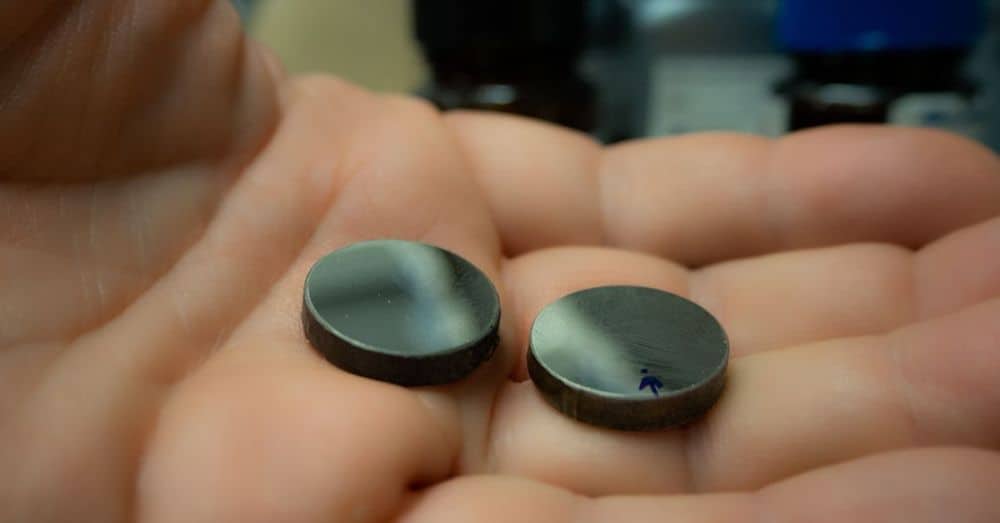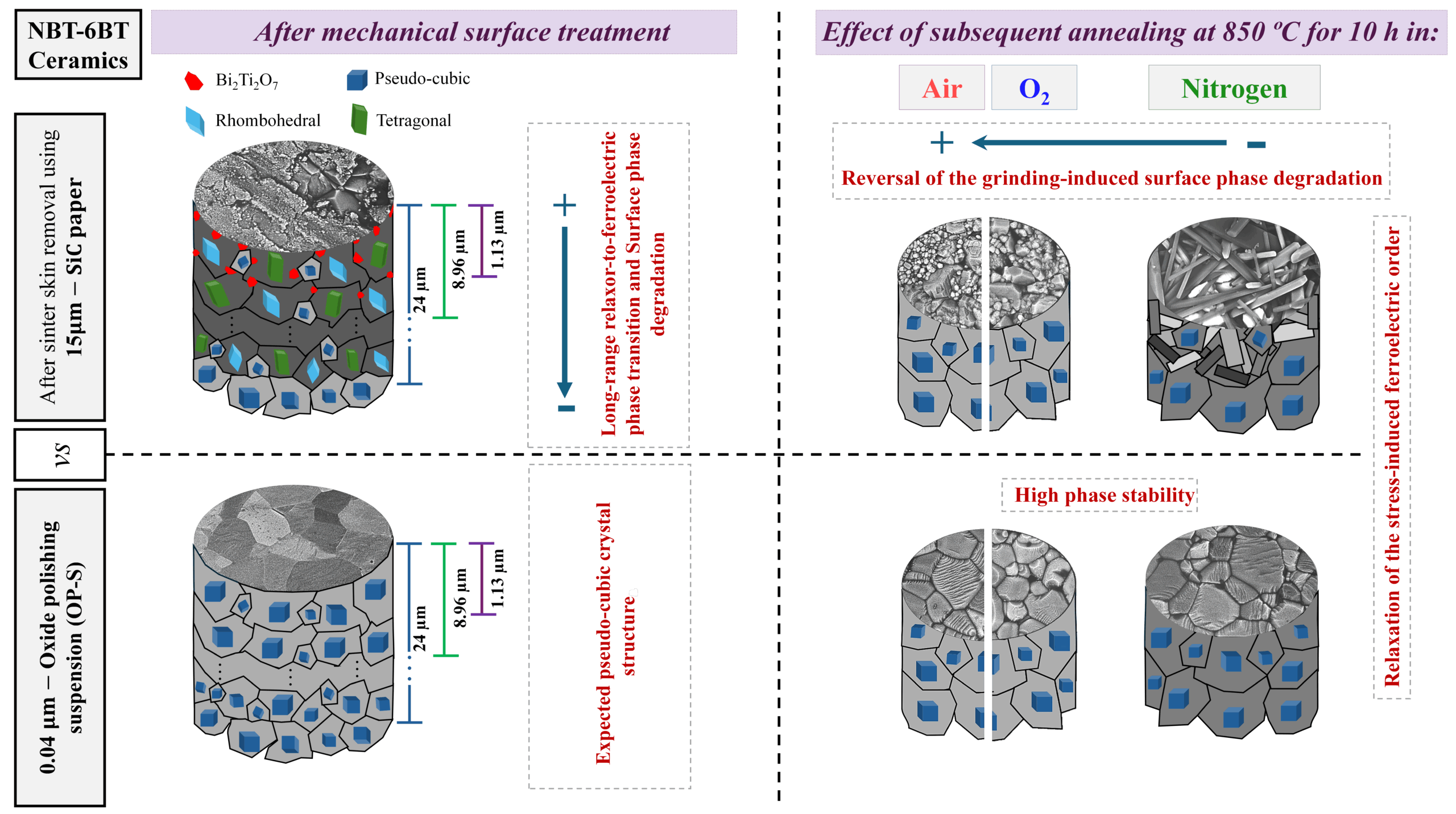
[Image above] Samples of high-entropy carbides that were engineered with electron-rich metals to withstand more force and stress before breaking. Credit: Liezel Labios, UC San Diego Jacobs School of Engineering
Brittleness is traditionally considered a key trait of ceramics. But in the past two decades, there are growing reports of ceramic materials that can plastically deform at room temperature thanks to the burgeoning field of dislocations in ceramics.
Dislocations are one-dimensional line defects that are the main carriers of plastic deformation in crystalline solids. When a crystalline solid is subjected to stress, the dislocations within its structure move, and this movement leads to permanent distortion.
Dislocation-mediated plastic deformation is best known in metallic materials. But since about 2003, researchers have identified and investigated various promising proofs-of-concept for a wide range of functional properties tuned by dislocations in ceramics.
While knowledge of dislocations in metals has aided researchers working with ceramics, there is a key difference between the dislocations found in these two types of materials. Unlike metals, dislocations in ceramics with ionic and/or covalent bonding may carry charges at their cores, with a surrounding space charge layer for charge compensation.
This charged feature means researchers should pay close attention to the ceramic’s electronic structure, or the arrangement and movement of electrons in the material, as it could greatly affect the behavior of the dislocations.
In 2021, researchers at the University of California, San Diego and Linköping University in Sweden published an open-access paper demonstrating the effect that electronic structure has on plastic deformation in high-entropy carbides.
High-entropy materials are multicomponent solid solution materials that contain five or more elements in near-equal atomic proportions. Having so many elements in the material increases disorganization of the atomic structure, which leads to formation of a new “entropy stabilized” simple phase that can demonstrate improved properties.
High-entropy carbides have demonstrated increased hardness, high melting temperatures, and high-temperature mechanical stability, which make them desirable for ultrahigh-temperature applications. However, they generally do not demonstrate the best fracture resistance, which limits potential uses.
In the 2021 open-access paper, the authors explained that several previous papers (here and here) by first author Davide G. Sangiovanni, associate professor at Linköping University, showed that the toughness of pseudobinary refractory nitrides could be enhanced by increasing valence electron concentration.
This improvement was attributed to the fact that a high valence electron concentration allows electrons to fully occupy bonding shear-sensitive metallic states near the Fermi level, which facilitates dislocation movement due to lowered stacking fault energies.
To explore whether this approach to improving toughness would also work for high-entropy carbides, the authors used ab initio molecular dynamic simulations and nanoindentation testing on two compositions: (MoNbTaVW)C and (HfTaTiWZr)C.
They found that the more electron-rich (MoNbTaVW)C demonstrated a greater fracture resistance, which would appear to support the theory that increased valence electron concentration leads to improved toughness.
“Nonetheless, it remains debated whether the experimental observations were incidentally consistent with the theoretical predictions given that only two samples with markedly different VEC have been considered in (26),” the authors write in a new open-access paper published in September 2023.

Credit: JacobsSchoolNews, YouTube
In the new paper, the authors investigated six more high-entropy carbide compositions to further elucidate the correlation between valence electron concentration and resistance to brittle fracture. As with the previous study, they paired ab initio molecular dynamic simulations with nanoindentation testing.
The results from this study confirmed the relationship between valence electron concentration and fracture resistance, thus demonstrating “a reliable strategy for computationally guided and rule-based engineering of deformation mechanisms in high entropy, solid solution, and doped ceramics,” the authors write.
The 2021 open-access paper, published in Materials & Design, is “Enhancing plasticity in high-entropy refractory ceramics via tailoring valence electron concentration” (DOI: 10.1016/j.matdes.2021.109932).
The 2023 open-access paper, published in Science Advances, is “Valence electron concentration as key parameter to control the fracture resistance of refractory high-entropy carbides” (DOI: 10.1126/sciadv.adi2960).
Author
Lisa McDonald
CTT Categories
- Basic Science


